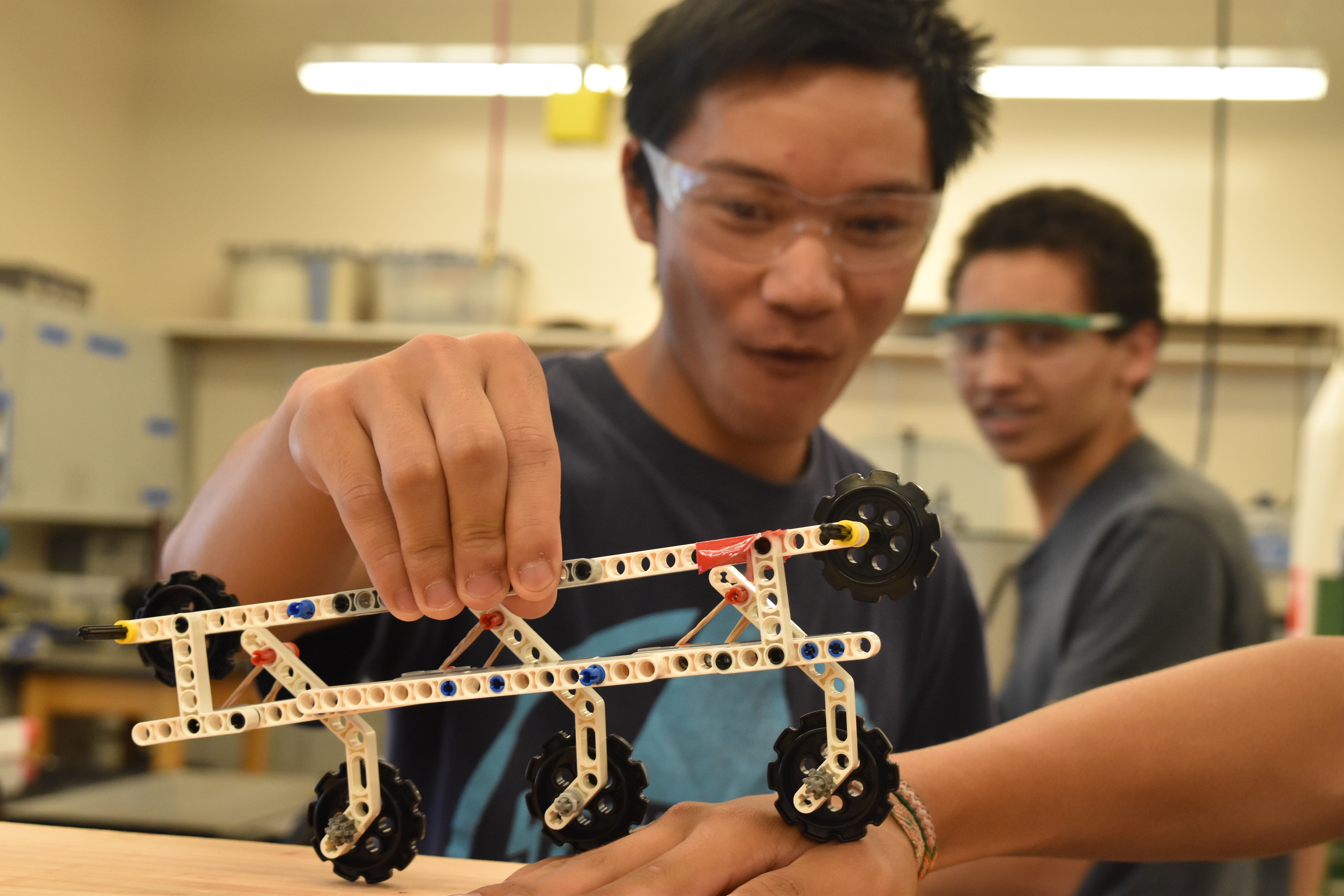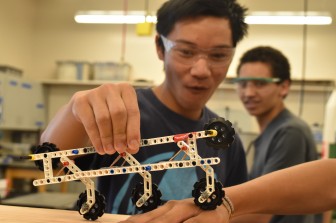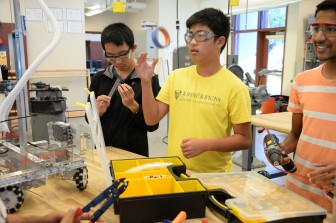
On Aug. 19, Aragon’s Robotics Team (ART) held its first informational meeting for prospective members, where it announced newly implemented changes to the team’s organization, most notably, the split of the original team into four separate smaller teams.
These changes came after a disappointing close to the SVR (Silicon Valley Regional) competition last year in which ART ended 41st out of 57 teams, introducing concerns over weaknesses in the team’s day-to-day functioning and highlighting the need for restructuring.
Junior Josh Dewitt, Head of Build for ART, explains the concerns with organization the team previously faced, saying, “Previously, the team was all part of FRC (FIRST Robotics Competition) Team 840, and the one FTC (FIRST Tech Challenge) team (4345) was a secondary volunteer only team. So, all FTC members were on FRC, but not all FRC members were on FTC.”

But with these changes, ART is “placing FRC on hiatus and founding [4] new FTC teams,” says junior Miles P. Olson, the Lead Programmer of ART, says.
“Our chief problem was that it was hard to find a place for everyone to be a useful team member. Some extremely dedicated members, who we are certainly grateful to have, would do a huge amount of work, and other members with less experience or time to dedicate would feel pushed out and not be able to participate as much.”
The creation of four new teams consisting of less than 15 members each aims to fix any disproportionate share of work as students now play a direct and pivotal role in the success of their team.
In addition, scheduling of team meetings is more flexible than before. Olson explains, “FTC robots are a lot smaller and don’t always need the large machines and power tools, so it’s a lot easier for teams to schedule extra meetings off-campus when they are more free, like on weekends. Small group meetings are way easier to reschedule than huge team meetings. It’s next to impossible to find times for a 50 person team to meet without causing conflicts”.
Discrepancies between the cost of managing a team for each competition may have also played into the changes. The FIRST (For Inspiration and Recognition of Science and Technology) organization, which arranges both FRC and FTC events, states on their website that the average FRC team requires a budget of $12,000 each year, as opposed to $2,000 for maintaining an FTC team.
DeWitt believes that FRC is generally regarded as a competition with much higher stakes, and although it is much more rewarding, there is greater room for failure because of its regulations and guidelines.
FRC prohibits any modifications of robots after the initial six weeks of build season, whereas FTC allows for teams to modify the robot all the way through the winter and even in between events and competitions.
DeWitt elaborates on this issue, saying, “Another benefit [to FTC] is the different build schedule [which starts] in the fall [and lacks] a defined “build season” crunch. As such, it is possible to improve the robot between competitions, and learn more about the design and refinement process. While FRC has a certain “pizzazz,” FTC is more compatible with the large number of students that are interested in STEM at Aragon.”
Meghana Gadiraju, the Head of Financing for ART, weighs the costly disadvantages of participating in FRC, saying, “Competing in such a big competition, especially when it costs that much money, isn’t as worth it, per se.”
Returning members of ART agree that these changes will result in a more enjoyable learning experience.

Tyler Ong, an engineer in the team, says, “I think that the changes are really good because they allow a lot of the new engineers and the new coders to have more hands-on-experience with making the robot because they incorporate into more smaller groups and are able to learn from a larger variety of experienced people from last year.
Junior Sofia Azalgara, Head of Media, agrees, “I think [the changes are] good for the team. It’ll give the build team more experience, and business can blend in with build.”
But despite unanimous support for the changes, team members concede that they would like to once again compete in FRC in the coming years. “I still wish we could do FRC, but we don’t know what’s happening next year, so maybe we’ll go back. I think we just needed to try something out this year,” Azalgara concludes.
